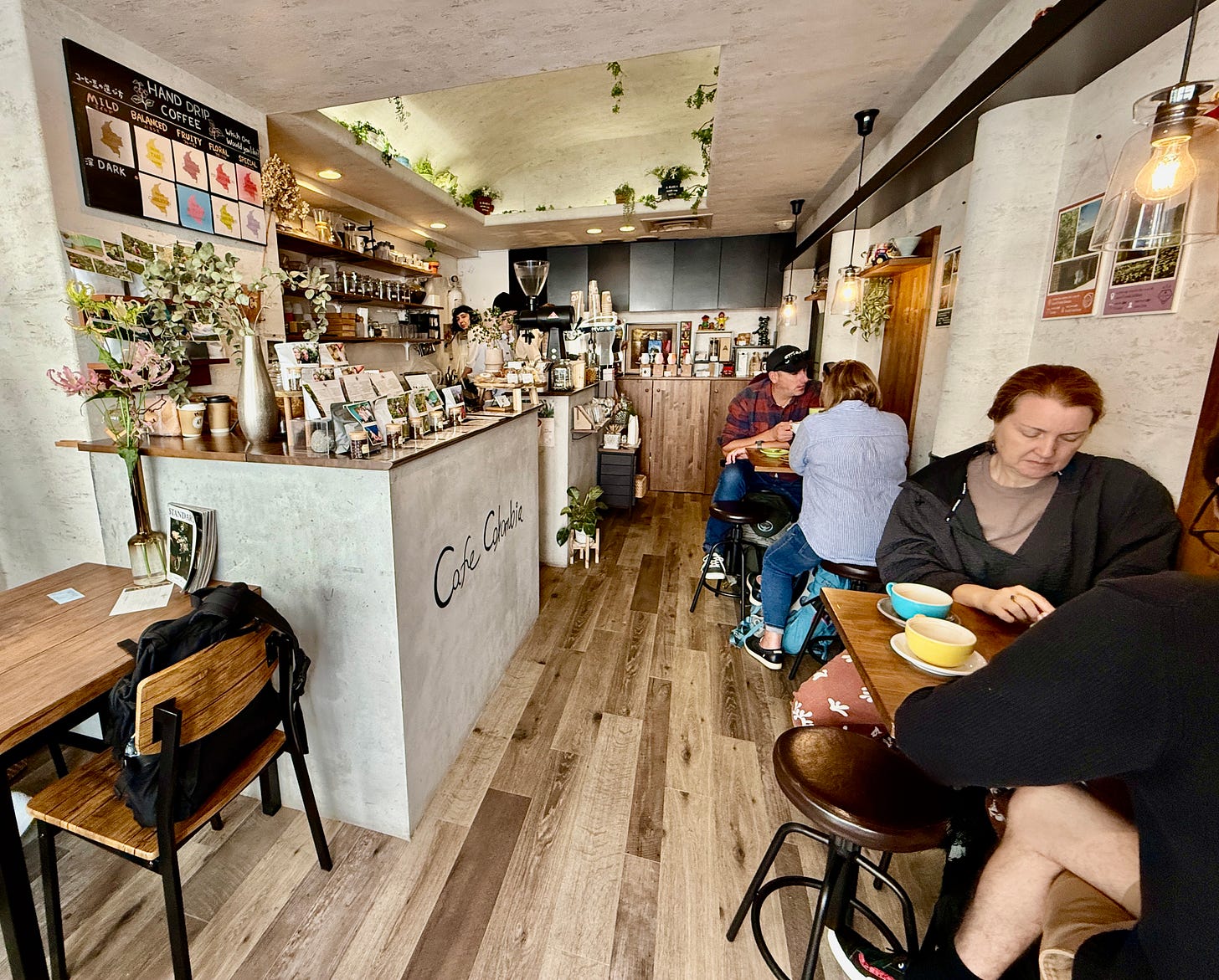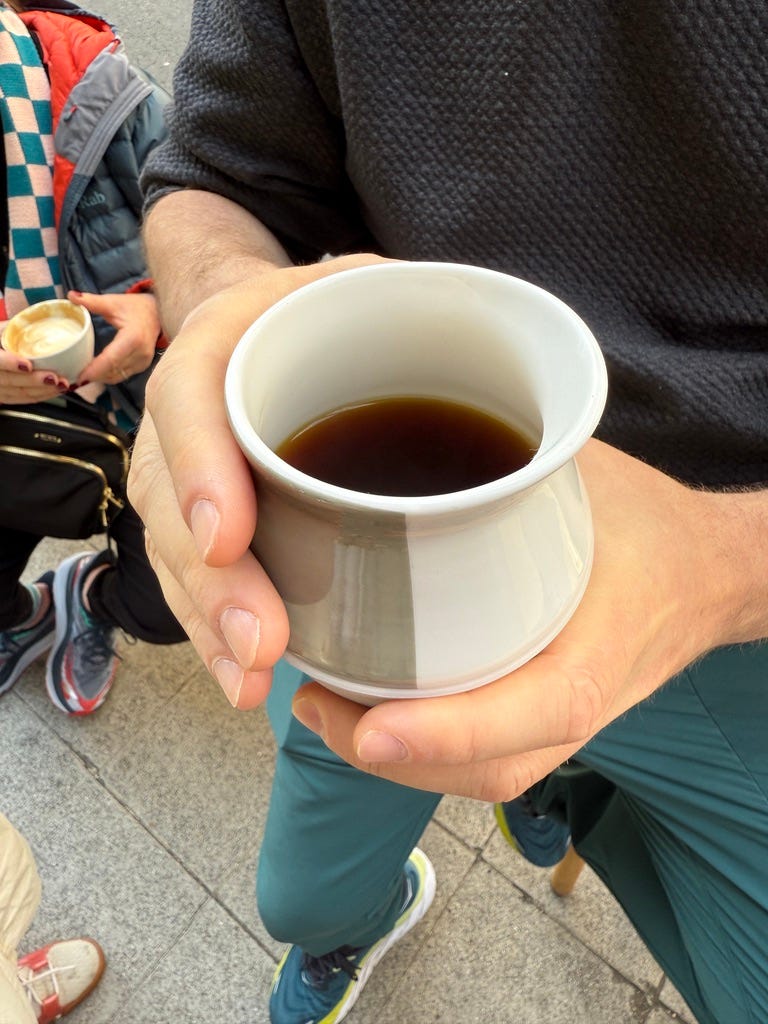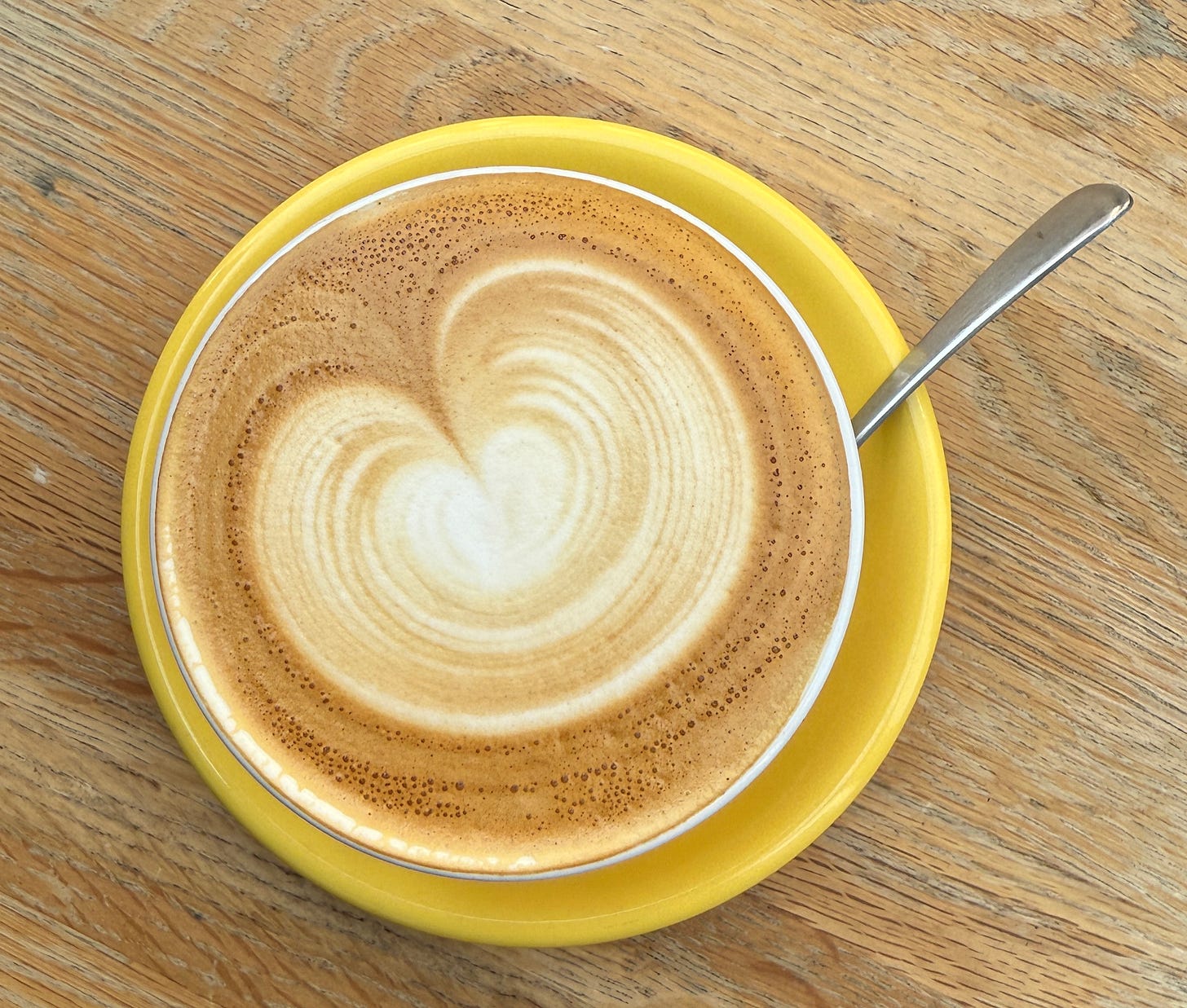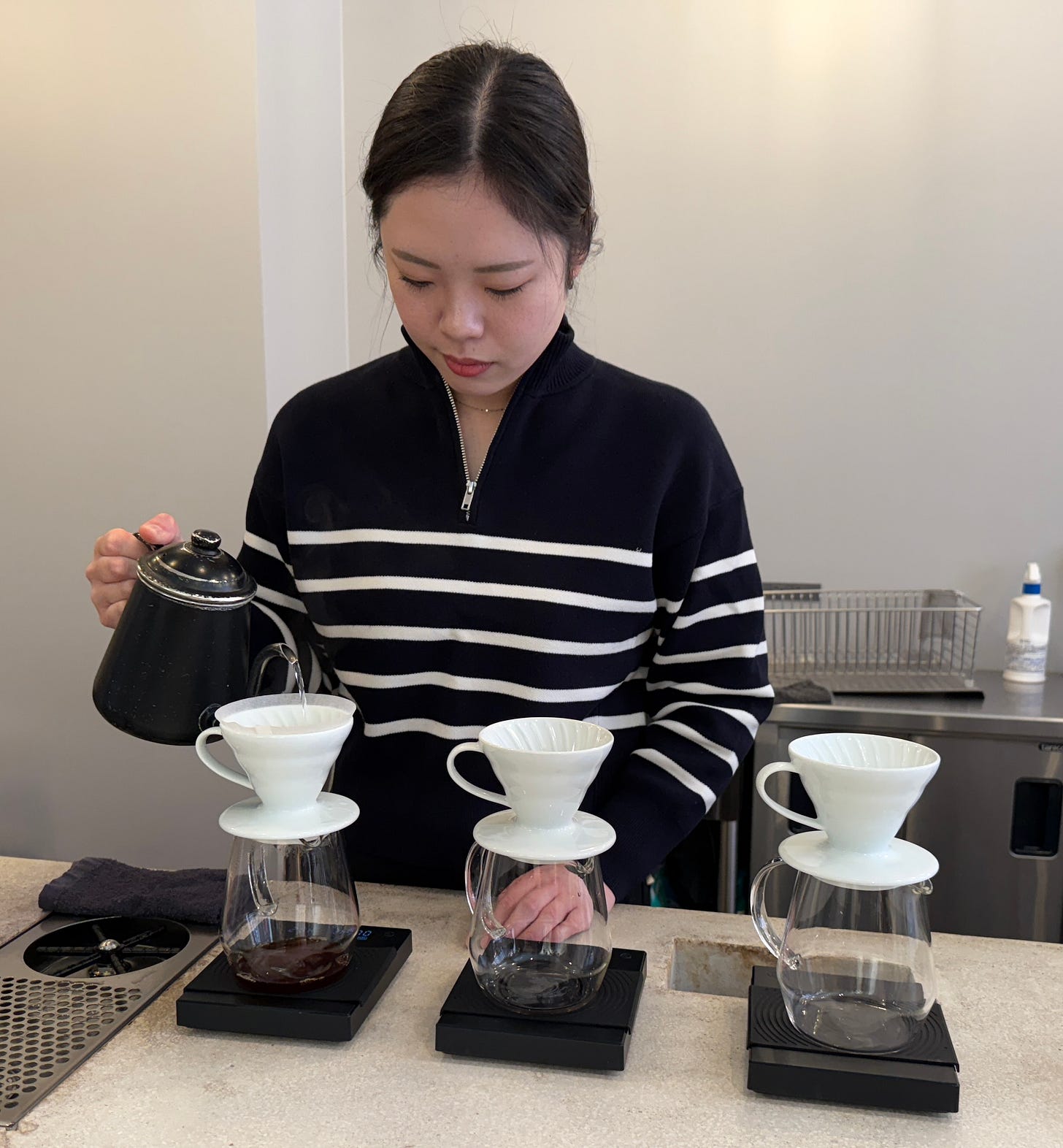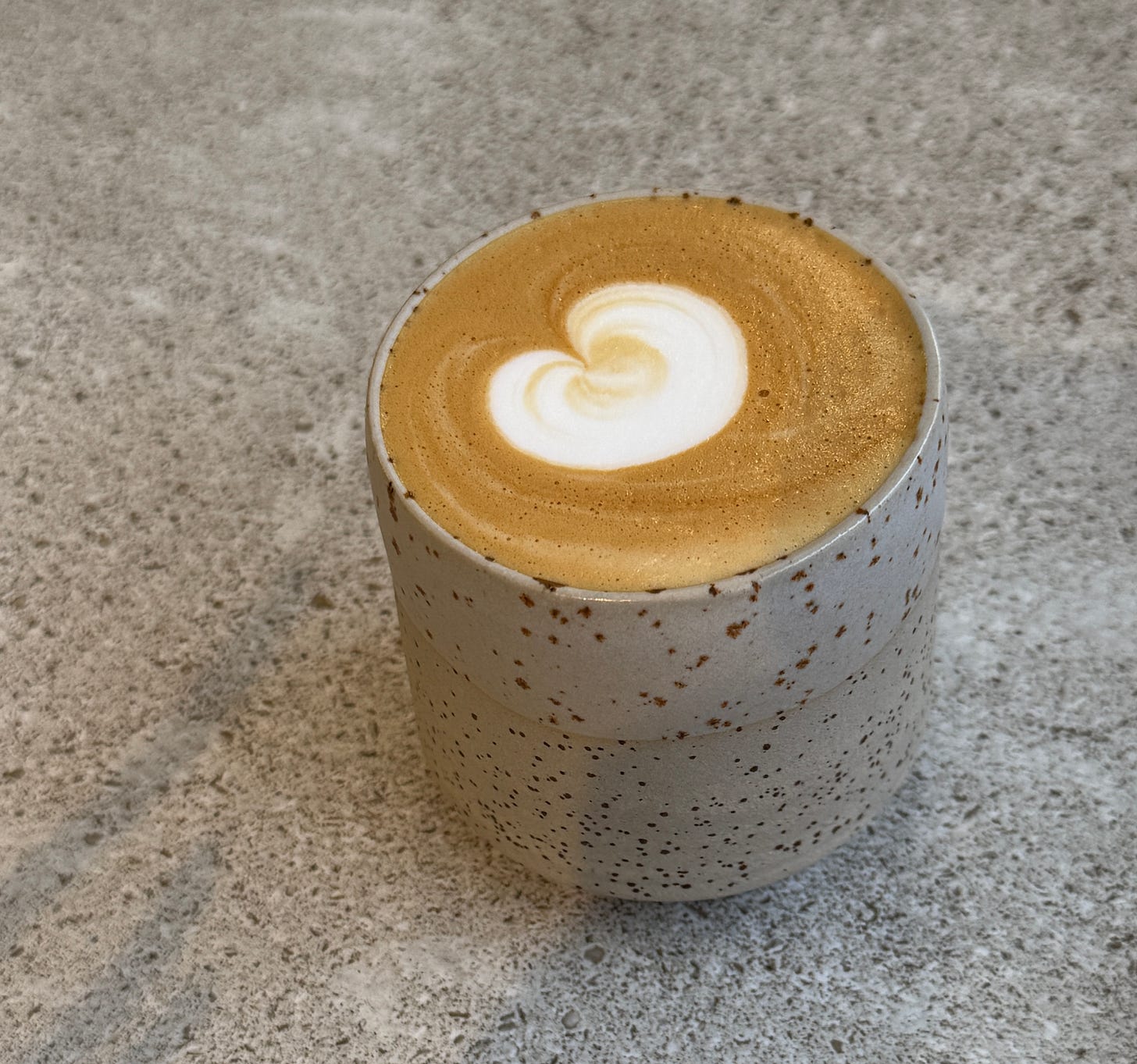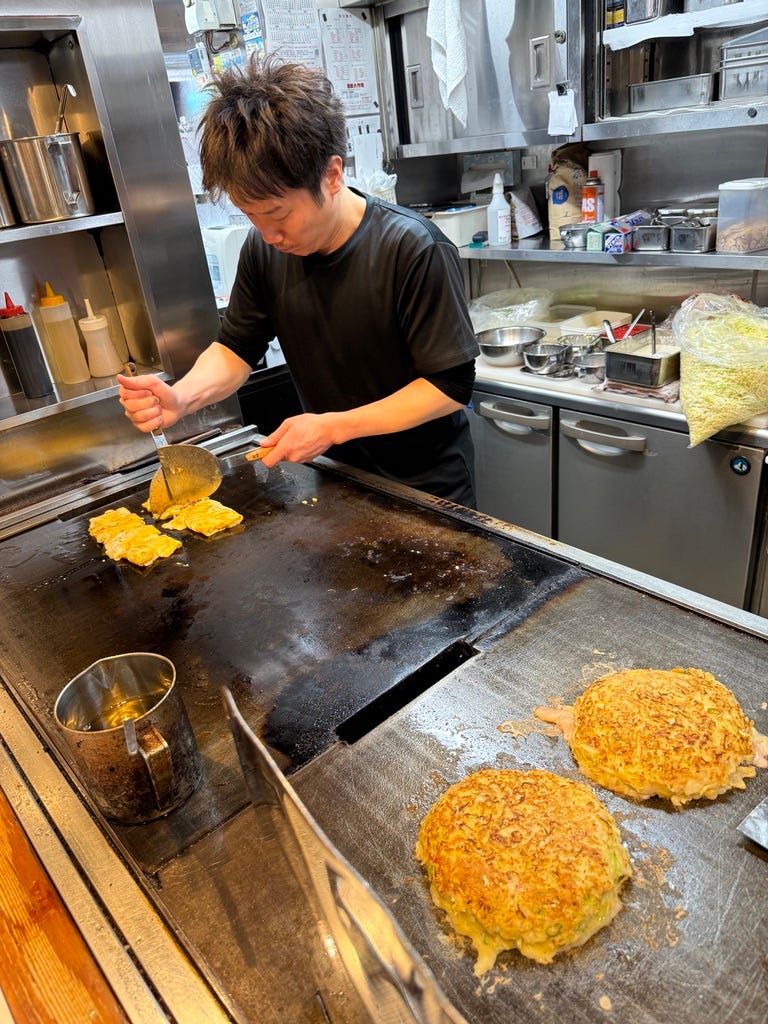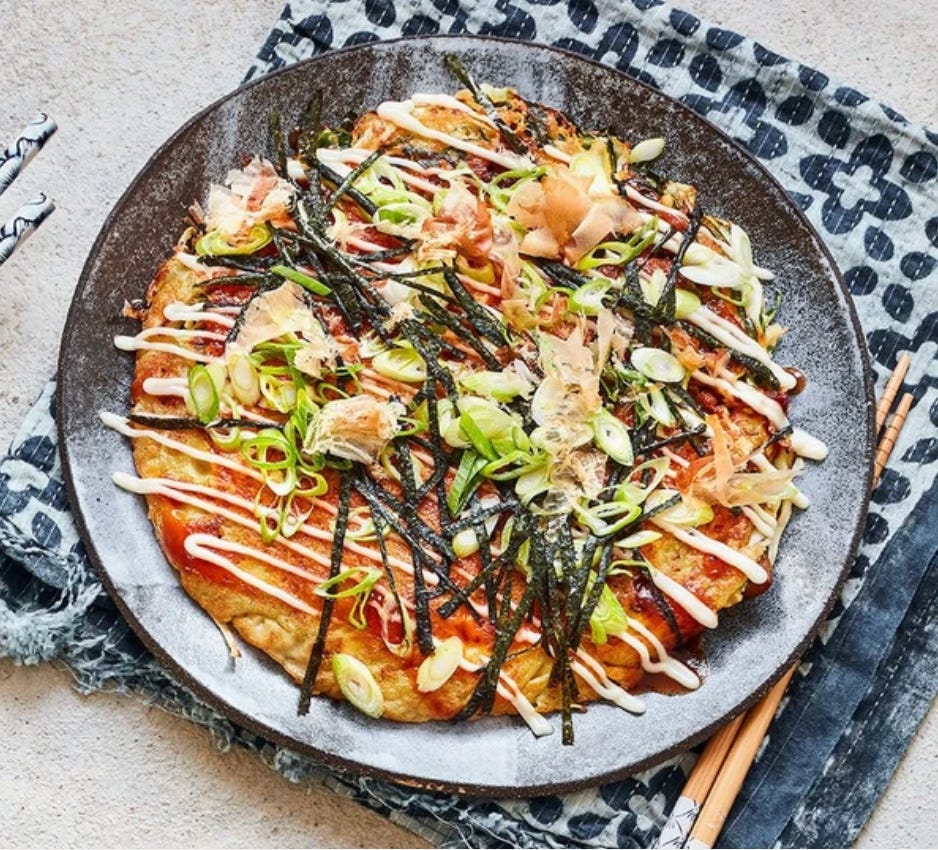Osaka tourist sites… But First, Coffee….
Let’s say you are in Osaka which, according to Conde Nast Traveler, more tourists will visit in 2025 than in any year since Japan was founded… and you wake up in the morning, thirsting for a hit of caffeine.
Crazily enough, many top-tier java joints don’t open until 11 am. Yes, these are obviously crafts people, not business people.
So, if it is 8 am and you are in Osaka needing a hit of caffeine, here are two potential caffeine oases:
Café Tales
This independent barrister only makes espresso and pour-over coffees with Colombian beans. Seven different beans are offered for pour-over coffees, and only one variety is used for espresso-based drinks.
The pour-over coffees are served in a small ceramic pot, or vessel, that has a non-cylindrical lip; if you sip from the white side of the “pot,” the coffee has a more evident acidic finish, if you drink from the colored side of the vessel, the coffee has a more rounded, richer, more robust, note. Strange, huh?
I thought the cappuccino was sensational, easily the best coffee I’ve had in Osaka so far.
Café Tales can best be reached at cafetales.colombia@gmail.com
Or secure directions and details at cafetales.jp
Tel: +81-06-4256-1808
Aoma Coffee
(that is NOT a typo.. it is NOT Aroma Coffee… it is Aoma Coffee
This is another caffeine Mecca serving robust, well made, densely frothed cappuccinos and elegant espressos.
This is NOT your average, everyday Starbucks or Peets experience — these are meticulously made. craft drinks.
Aoma Coffee can be found online to get directions, etc., at aomacoffee.com
Tel: +81-06-4708-4619
And now for something completely different….
Feeling peckish around 1 pm, we headed for a distinctly original Osaka restaurant for a thick, griddled pancake known in shorthand as “okonomi.”
The long form is Okonomiyaki, which describes a savory, teppanyaki-griddled pancake made with wheat flour and an assemblage of ingredients, including cabbage, sea meats, octopus, pork, and shrimp. Japan’s version of Chinese fried rice, bound by wheat and not rice, and flat, not mounded.
The pancakes are made on a griddle in the kitchen, then brought out to guests where they are placed on a griddle, or teppanyaki plate, in the center of the dining table. The griddle is heated by gas.
The pancakes in Osaka are topped with a sauce made with Worcestershire sauce (for real!), fried seaweed flakes, bonito flakes, a local mayo and pickled ginger.
The version we had in a small boîte whose name I couldn’t possibly tell you… was sensational.
The mixture of pancake, sweet-yet-sour sauce, and perfectly textured, crunchy interior made the inexpensive lunch item memorable.
If you get to Osaka… ask your concierge to help you find a local Okonomiyaki for a midday meal.
You deserve a break today.. and if you want to break from routine, THIS IS THE WAY TO DO IT.
The cook in this small restaurant (above) prepares a variant of Okonomiyaki, while in the foreground are two perfect examples of the Osakan pancake, not yet topped and brought to the table.
Many on this distribution list told me that you are heading to Osaka yourself this year. You’re going to find a lot to like about Osaka; Conde Nast says the city spent $62 billion preparing for World Expo, which happens here this summer.
I guess we’re lucky trend setters on this one…. been there, done that… before it becomes “a thing.”
Jim


